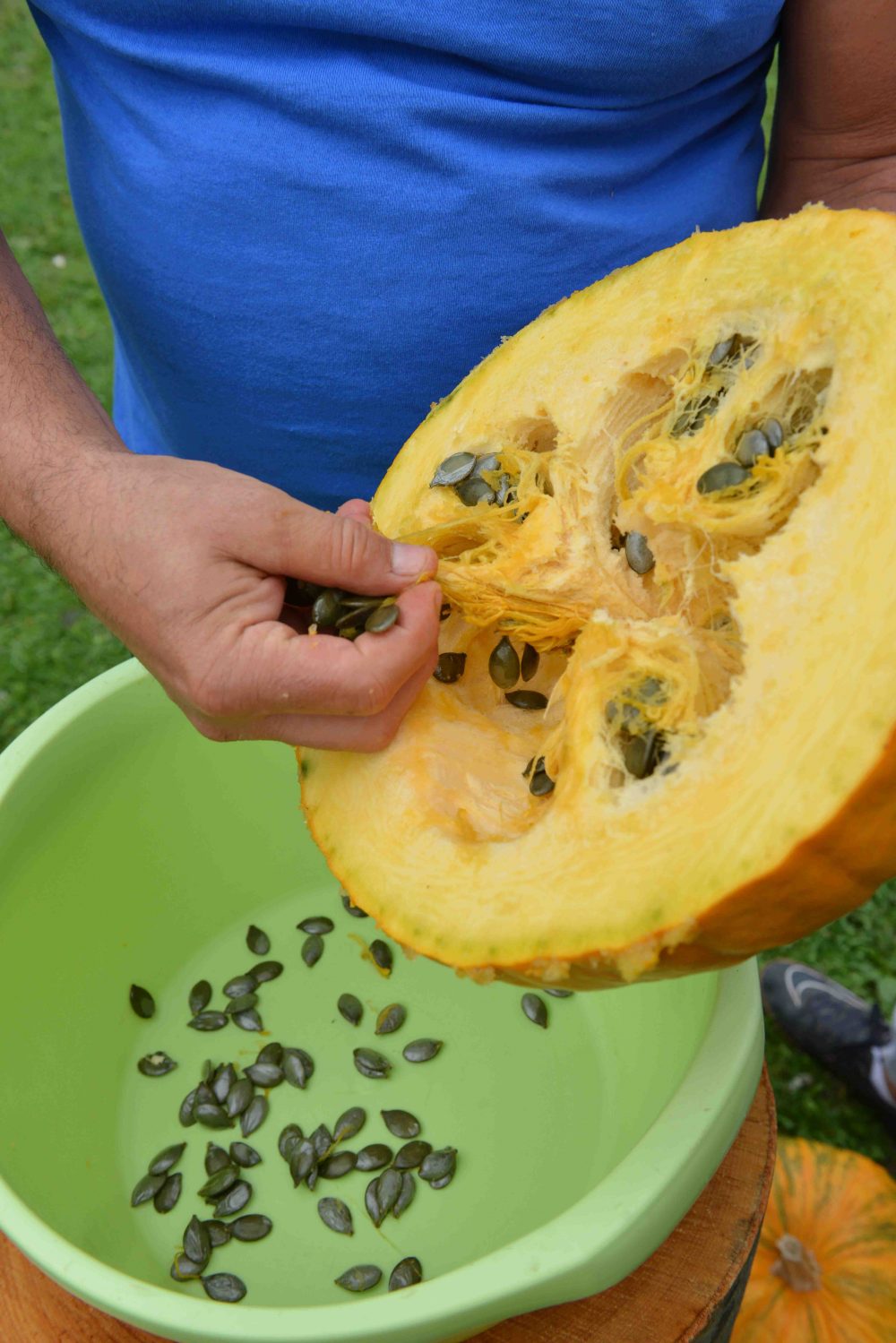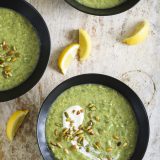Štorga Jeronim’s Farmyard is a sloping tumult of ducks, cats, geese and firewood, a riot of honks and quacks on an otherwise quiet hillside in Novi Marof, a speck of a town in northwestern Croatia. A basketball-size orange and green pumpkin is plunked onto a tree stump and Jeronim sets to it with a saw, cleaving it neatly to expose a tangle of fat, thumbnail-like seeds a green so dark they almost are black.
He plunges his fingers into the flesh, plucking a fistful and tossing them into a bucket. They’ll be washed, then dry in the sun for three days on mesh-lined wooden racks. An old-school process he’ll repeat to harvest some 4 tons of pumpkins. The flesh itself is churned back into the ground to feed the next season’s harvest. The seeds will be ground raw to produce Croatia’s signature pumpkin seed oil, an ingredient used with the same abandon Italians lavish olive oil.
It’s a tedious process, taking more than 30 pumpkins to produce just 1⁄3 liter of oil. But the results speak for themselves. Jeronim hands me a raw seed to try. It is meaty, clean, fresh and a little grassy. Then he opens a bottle from an earlier pressing and drizzles a deep green, viscous oil over my finger. The taste is unbelievably rich and deep, nutty and savory and begging for bread to be dredged through it.

In Croatia, pumpkin seeds are a prize crop used widely in cooking.
Before coming to Croatia, I confess to having little idea how central pumpkin seeds are to the cuisine, so often represented by the seafood-centric south. But they are everywhere, and not just as oil. Ground into a khaki-colored flour, they show up as bread. Toasted and pounded with oil and garlic, they make a rich pâté-like spread. They are munched as snacks, too. And baked whole into muffins and scattered over roasted vegetables, adding richness and crunch.
Perhaps best, though, is the simplest of soups I have in nearby Varaždin, a 2,000-year-old walled city along the Drava River. At Restoran August—a stone-arched eatery owned in part by the local farmers market— chef Goran Jelušić serves me a bright green soup that is as fresh and creamy as it is bold and savory. When he shows me how it is made, the source of all of that is obvious. Little more than pureed pumpkin seeds and barely cooked zucchini, it is intensely creamy, yet there is no dairy.
At Milk Street, we stayed mostly true to Jelušić’s recipe. We loved the way the freshness of the minimally cooked zucchini balances the richness of the pumpkin seeds, which gives the soup both deep flavor and satis- fying body. We did add a bit of dill for herbal freshness, while lemon zest and juice brightened everything. Lesson learned: Pumpkin seeds clearly can hold their own against the flesh.




